Potty Training Girls: 11 Strategies That Work
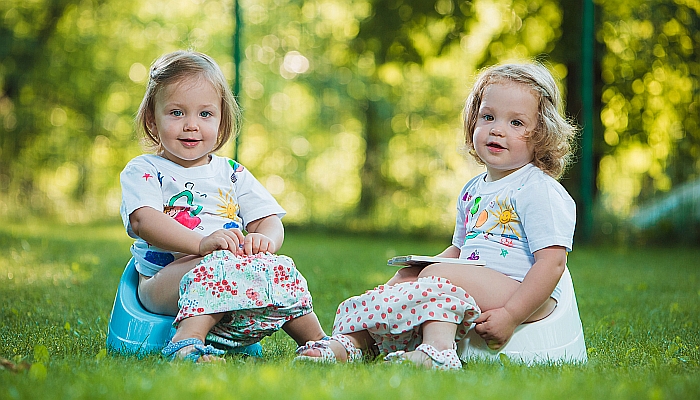
- Begin training as soon as your daughter shows signs that she’s interested in the potty or able to recognize when she needs to go.
- Using a schedule can help you get your child to the potty to pee or poop at the right time.
- Girls should be taught to wipe correctly to avoid infection.
Is your toddler showing interest in using the toilet? Or maybe they’re getting older and you’re thinking it’s time to make the switch from diapers to the potty?
That’s fantastic! Hopefully, you have a fenced-in backyard and room for them to run free for a few days! Potty training nature’s way!
Oh, wait—you’re potty training a girl? Well, that’s certainly going to look a little different.
Potty training is a process that all parents of young children eventually face. For parents of girls, the process can seem a bit more daunting than for potty training boys. The “stand and aim” game is not going to cut it.
Girls will need a little more structure, support, and training. There are just anatomical differences that make potty training a girl unique.
Using some potty training tips will make the process easier. We’ve rounded up the best potty training tips on how to make your little girl feel comfortable and confident while she is toilet training! Here are tested strategies that work for potty training girls.
What Is the Best Age to Potty Train a Girl?
Most girls begin showing interest in the potty between 18 and 24 months. This is often a great potty training age for girls. They are usually starting to communicate and can recognize when they are peeing or pooping.
However, it’s important not to put too much pressure on yourself as far as age is concerned. You will know your daughter is ready to toilet train when you notice these signs:’
- She’s watching you go potty or showing general interest in the toilet.
- She’s staying dry for an hour or two before peeing again.
- She’s complaining about a dirty or wet diaper.
- She’s hiding when pooping.
- She’s telling you when she has to go potty.
- She’s pulling her pants up and down.
- She’s following directions.
When these signals emerge, it’s time to introduce your little girl to toilet training.
How Long Does It Take to Potty Train Girls?
Potty training girls can be a bit of a challenge. Every child is different, and some girls may take longer than others to catch on.
Remember that your child is unique. She’ll become fully potty trained when she’s ready.
There’s no set answer for how long it will take to potty train your daughter. However, a general estimate is around 3 to 6 months.
Potty training for naps or sleeping at night often takes much longer. Some children might have accidents during their naps or while sleeping up until 5 years old. (Possibly longer if they have weak bladder control or are deep sleepers.)
There are some helpful tips to keep in mind that may help the process go more smoothly.
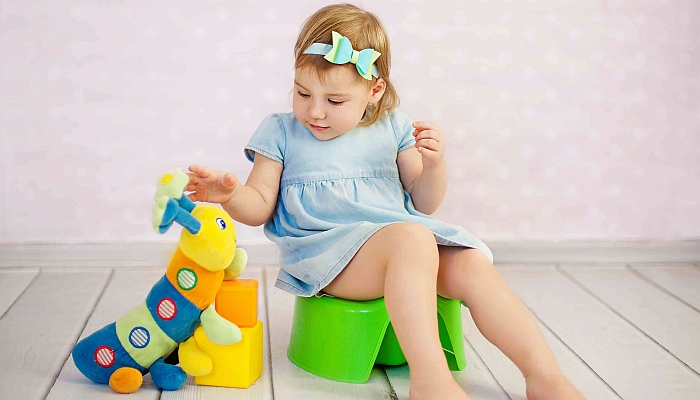
Tips for Potty Training Girls
Trying to potty train a girl can be a bit challenging, but it doesn’t have to be stressful. Here are a few potty training tips to help you get started:
1. Start early.
If your child is showing signs of readiness, the sooner you start potty training, the easier it will be. Start training as soon as your daughter shows signs that she’s interested in the potty or able to recognize when she needs to go.
2. Be patient.
It’s normal to want quick results. After all, potty training girls can be exhausting. However, your patience is key to success.
If you try to rush or hurry the process, you’ll likely end up frustrated. Your child will be able to sense your frustration. This can cause further delays in the process.
It’s important to keep this as fun as possible for your little girl. Staying patient will remove pressure and any feelings of failure for parent and child.
If you find yourself training a particularly difficult child, know there is plenty of support and parents who have been there. It’s helpful to ask other experienced parents when wondering how to potty train your stubborn toddler.
3. Purchase a little potty chair.
If you try to train your child to use a regular toilet, it might be difficult. Little ones often have a hard time climbing up on big toilets. Plus, the hole is too large for their small bodies.
Purchasing a little potty chair or potty training seat will allow your child to go freely, without your help. Giving them this independence might encourage potty use. Many girls think having a child-size potty chair is fun.
You can also purchase a toilet seat and steps that fit on your regular toilet. Just keep in mind that your child may still need your help climbing up. This depends on their age and ability.
4. Teach proper wiping.
One major difference between potty training boys and girls is proper cleaning routines. Girls should be taught to wipe correctly to avoid infection.
When you train your daughter to wipe herself, show her how to sit and wipe from front to back. Teach her to avoid wiping from the back and pulling forward, as this could bring feces to her vaginal area.
You can also show her how to use toilet paper to gently pat her vagina dry. This will keep her from rubbing too hard and hurting herself.
5. Teach her how to sit properly.
When you start training a girl to use a toilet, you will notice one tricky obstacle. If girls don’t sit correctly, their pee will spray out of the toilet and onto their clothing. This is especially inconvenient when you’re away from home and potty training in public bathrooms.
If possible, have your child sit back on the toilet with legs spread apart. This might require you to remove their shorts or underwear.
Alternatively, you can have her sit on the toilet and lean all the way forward. This will help position her body so that the pee will come out in a downward stream instead.
6. Let your daughter go without clothes.
One really helpful potty training method is to let your child go without clothes for a few days. This of course happens at home. Both naked potty training and the Oh Crap Potty Training Method use this approach.
During this time, your child will have easy access to the toilet when visiting the bathroom. As a plus, it also lessens the laundry load for you. Just keep your child off the carpet for easier cleanups.
7. Set up a potty training schedule.
Potty training schedules are helpful tools to use when potty training. Some schedules have you take your child at regular intervals to the potty. Others have you create a schedule around your child’s normal bathroom routine.
Using a schedule can help you get your child to the potty to pee or poop at the right time.
8. Celebrate triumphs.
When your toddler goes pee or poop in the potty, make a big deal about it. Some parents will sing songs, do a dance, or even give them a treat.
Using a potty training chart might also help celebrate the moment. A reward chart for potty training will often have spots to place a sticker after each potty use. These stickers might add up to a special toy or treat.
Whatever you choose to do, be sure your little girl knows her success was seen. This will motivate her to continue.
9. Let your daughter pick out big girl underwear.
One of the most exciting parts about potty training for many kids is picking out new underwear. Take your little girl out for a special shopping trip where she can pick out her underwear. She might like purchasing some with her favorite characters.
Be sure to also let her know that this new underwear should stay dry. While accidents happen, remind her that these are special and different from pull-ups. Let her wear underwear around the house after she has a little more control.
10. Remain calm.
We know. Seeing your new rug covered in pee or poop can make you want to shriek in shock. However, that reaction won’t encourage your child to potty train any faster.
It’s important to remember that your reactions could greatly impact your child’s potty training success. Instead of reacting to an accident with scolding or shock, remain calm. Tell your child it’s okay that they had an accident.
It can be helpful to bring your daughter right to the potty after you see her pee or poop on the floor. You might try saying something like, “Uh oh. That’s okay. Accidents happen. Let’s go on the potty and try again.”
11. Hold off on nighttime potty training.
The temptation is strong to throw out every diaper when you first start potty training. It’s important to know that nighttime potty training might not happen for months or years to come. Some children aren’t able to hold their bladder through the night, or even just for nap time.
We recommend you focus on daytime potty training before attempting nighttime. Wait until your child remains dry for long periods during the day or through the night. When their nighttime pull-ups are mostly dry, that lets you know they’re ready.
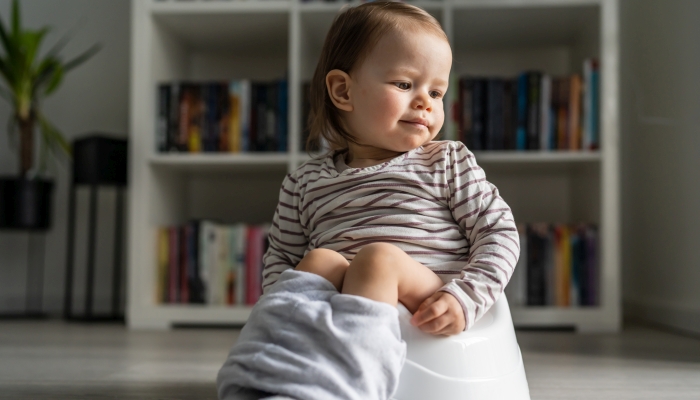
Potty Training Girls: What Works and What Doesn’t
Potty training girls can be a challenge, and some strategies might work better than others for your child.
For example, some girls may respond well to a reward chart where they get a sticker for every time they use the potty successfully. Alternatively, others might prefer a rewards system where they get a small treat each time they use the potty. If a chart doesn’t work for your child, they might be more motivated by praise and affirmation instead.
Similarly, some parents swear by using pull-ups as an effective transition between diapers and underwear. Others, however, say that pull-ups caused their child to regress or take longer to potty train.
The bottom line is that every child is different and will respond to different potty training techniques. So it’s important to experiment until you find what works best for your daughter. But with a little patience and persistence, you’ll eventually get there!
FAQs
Is it possible to potty train a girl in 3 days?
Yes! The three day potty training method is a great potty training strategy to use for those wanting to see results quickly. This method consists of staying home for 3 days and keeping your child diaper-free.
You’ll need to give your child plenty of fluids during these three days as well. This allows for plenty of practice using the potty. While you might encounter many accidents during these three days, you will also see your child quickly recognize their body’s bathroom cues.
When should I take a break from my daughter’s potty training?
If your child starts showing symptoms of anxiety or toilet refusal, it might be time to take a break. You want to keep this a fun, enjoyable experience for your child. Indicators of stress might indicate they aren’t emotionally ready.
If this happens, wait a few months and try again. Don’t try and force your child to use the potty before they are ready. Doing so might cause frustration for both you and your child.
Can we travel while my daughter is in potty training?
Traveling before your child is fully potty trained can certainly be tricky. It’s not impossible, but it will take lots of preparation and frequent stops.
If you are traveling during this time, we recommend purchasing a travel potty. This will make bathroom stops more convenient. You might also consider using pull-ups as a safety net so you don’t have accidents in the car seat.
When should I talk to a doctor about my child’s nighttime potty training progression?
Many parents worry about nighttime accidents in children. For some, it might be a 4-year-old who wets the bed, while others are concerned about their 10-year-old. It’s hard to know what’s normal and what might have an underlying issue.
Most children grow out of bedwetting on their own when their nervous system and bladder mature.
Talk to your child’s pediatrician if you notice any of the following:
- Consistent bedwetting past the age of 7
- Sudden bedwetting after 6 months of staying dry
- Fever or stomach ache along with bedwetting
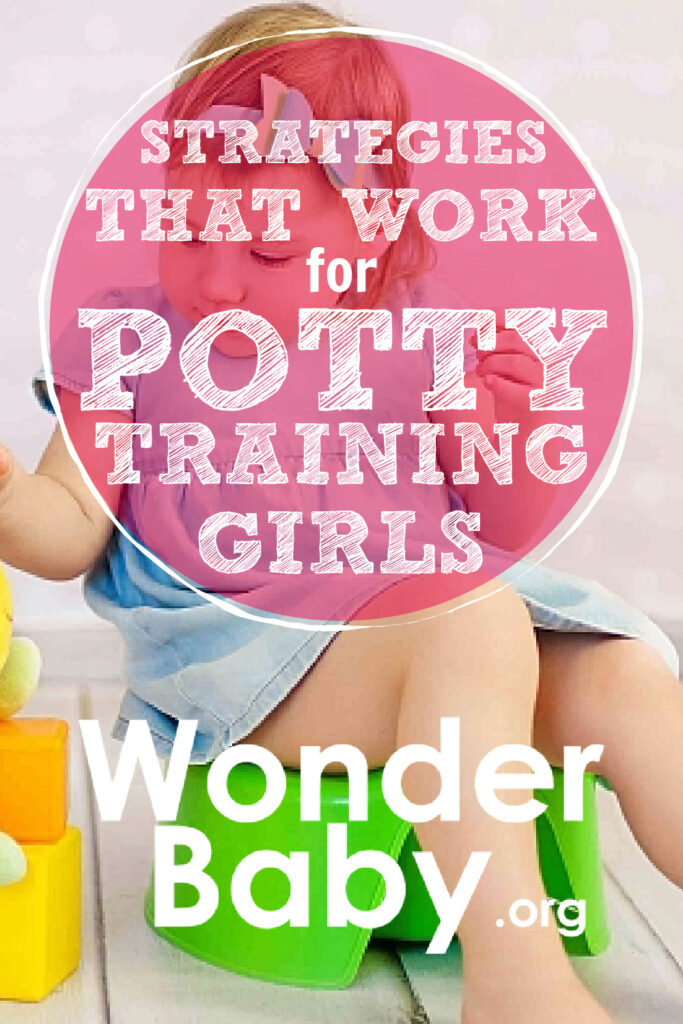
Related Posts
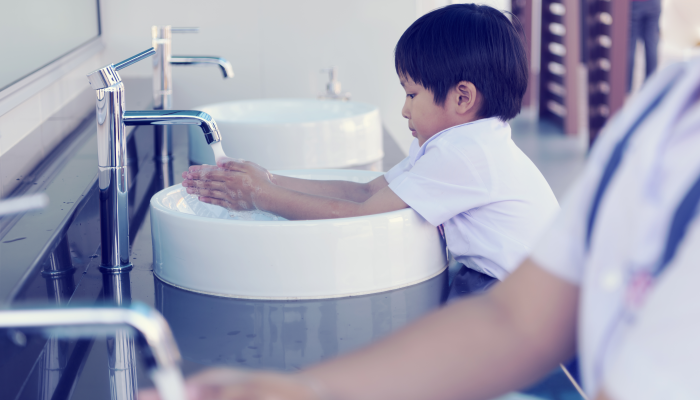
IEPs, Potty Training
7 Sample Toileting IEP Goals
Toileting IEP goals should address the specific needs and abilities of each child. Be flexible and patient as your child works on their toileting skills.
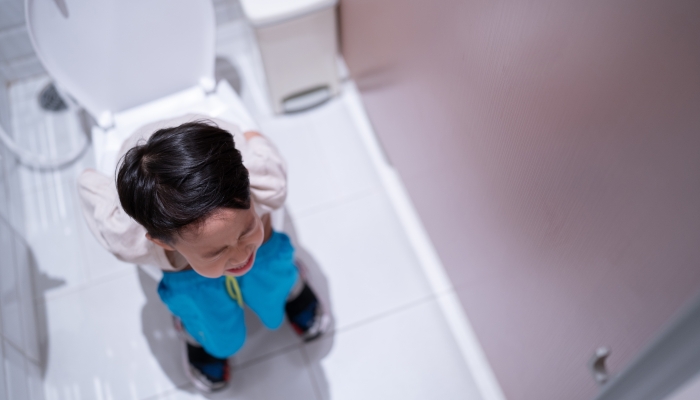
Potty Training
How To Deal With Constipation When Potty Training
Constipation is common amongst children of potty training age. Many children suffer from potty training constipation, but there are things you can do to help.
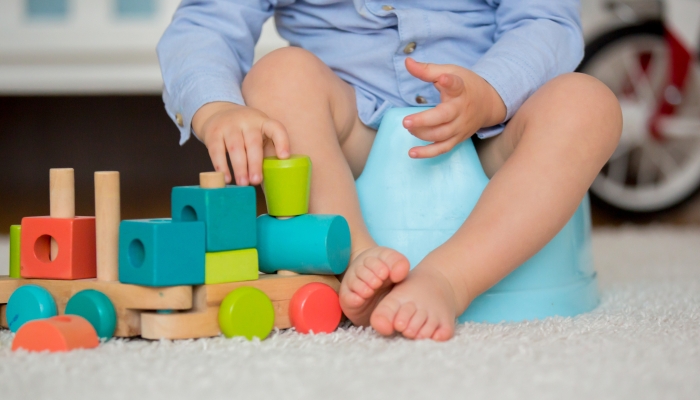
Potty Training
5 Potty Training Games To Make Potty Training Fun
Learning to use the toilet doesn’t have to feel like hard work. There are lots of potty training games you can play with your toddler to make learning fun.